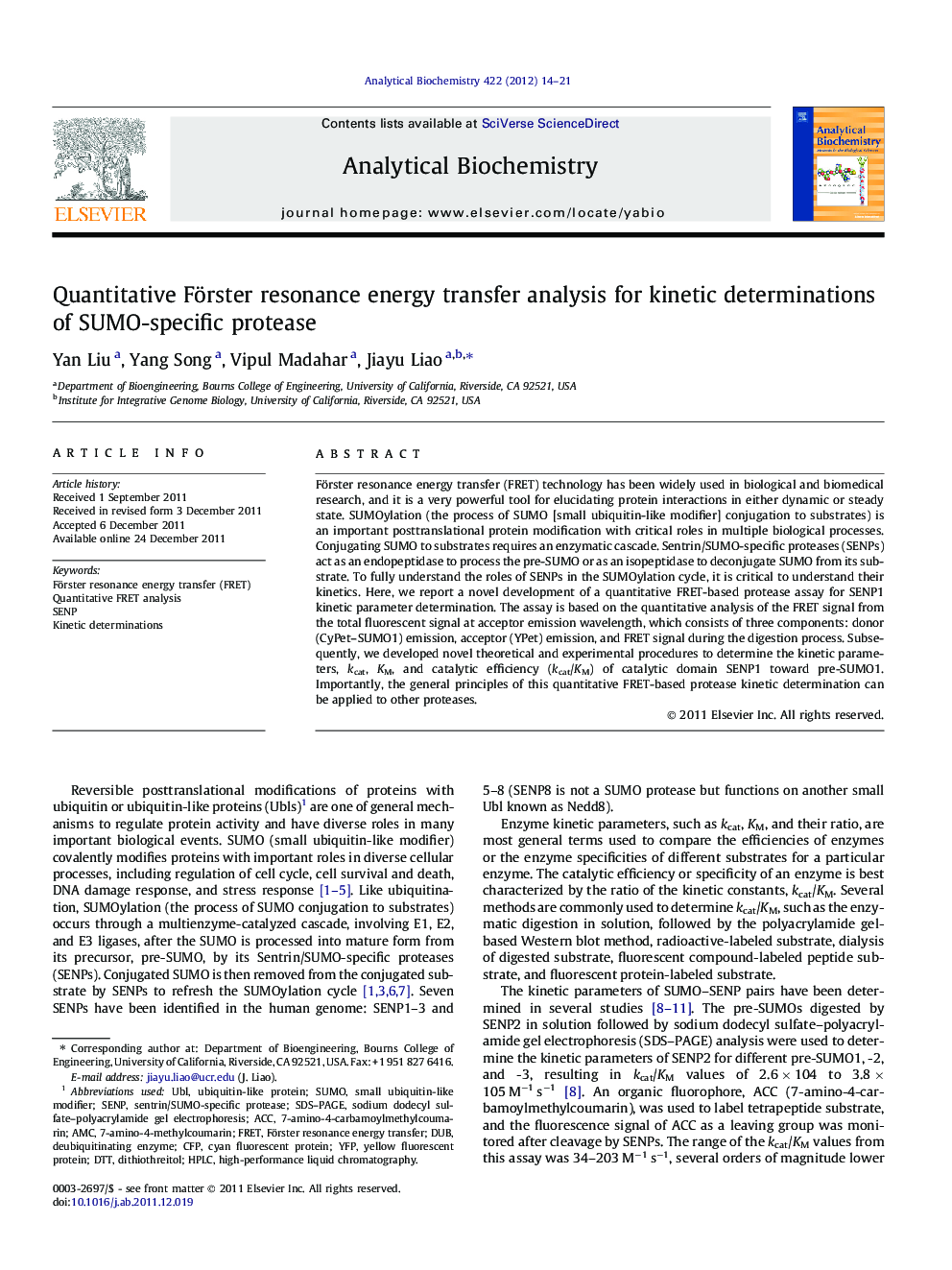| Article ID | Journal | Published Year | Pages | File Type |
|---|---|---|---|---|
| 10533589 | Analytical Biochemistry | 2012 | 8 Pages |
Abstract
Förster resonance energy transfer (FRET) technology has been widely used in biological and biomedical research, and it is a very powerful tool for elucidating protein interactions in either dynamic or steady state. SUMOylation (the process of SUMO [small ubiquitin-like modifier] conjugation to substrates) is an important posttranslational protein modification with critical roles in multiple biological processes. Conjugating SUMO to substrates requires an enzymatic cascade. Sentrin/SUMO-specific proteases (SENPs) act as an endopeptidase to process the pre-SUMO or as an isopeptidase to deconjugate SUMO from its substrate. To fully understand the roles of SENPs in the SUMOylation cycle, it is critical to understand their kinetics. Here, we report a novel development of a quantitative FRET-based protease assay for SENP1 kinetic parameter determination. The assay is based on the quantitative analysis of the FRET signal from the total fluorescent signal at acceptor emission wavelength, which consists of three components: donor (CyPet-SUMO1) emission, acceptor (YPet) emission, and FRET signal during the digestion process. Subsequently, we developed novel theoretical and experimental procedures to determine the kinetic parameters, kcat, KM, and catalytic efficiency (kcat/KM) of catalytic domain SENP1 toward pre-SUMO1. Importantly, the general principles of this quantitative FRET-based protease kinetic determination can be applied to other proteases.
Related Topics
Physical Sciences and Engineering
Chemistry
Analytical Chemistry
Authors
Yan Liu, Yang Song, Vipul Madahar, Jiayu Liao,
